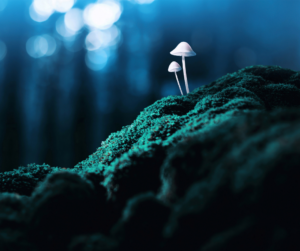Psychedelic Assisted Therapy

What IS Psychedelic Assisted Therapy?
Psychedelic Assisted Therapy is a specialised therapeutic practice that combines psychedelic drugs in a specialised therapeutic setting supporting deeper access into deeply buried and body held trauma.
With psychedelic assisted therapy, enhanced awareness or new perspectives can be achieved, potentially creating and facilitating deep and life long remission from hard core psychological issues like complex PTSD and depression.
Psychedelic Assisted Therapy allows the habitual, habit forming part of the brain to switch off, and other areas of the brain to switch on. Under psychedelic therapy, a client can access extraordinary realities beyond the every day mind. The client becomes more receptive to insights and understandings of their conscious mind would normally block, allowing old habits and negative patterns to be replaced with new, creative and empowered choices. Old, stuck emotions can also be cleared from the body at a deep level.
Psychedelic Assisted Therapy uses common, but mostly illegal drugs, during highly specialised and focused therapeutic therapy sessions. Research into these substances and their profound impact on entrenched mental health issues began in the 1950’s. Research into psychedelic assisted therapy sessions was extensive across the world during the 50’s, 60’s, 70’s and early 80’s.
In fact, psychedelic medicines were thought to be as important a discovery to psychiatry, as the microscope was to medicine. Even though some of these drugs (psilocybin, cannabis, ayahuasca, peyote & cannabis among others) have been used in religious ceremonies, rites of passage and as medicine by indigenous cultures for thousands of years.
As Albert Einstein once said…” I would not have been able to unlock the secrets of the universe with my logical mind…”
How Psychedelic Therapy differs in its use of psychedelic drugs
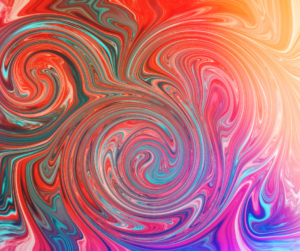
Psychedelic Assisted Therapy use is very different to common place recreational use of psychedelic substances. Firstly, it differs in the intention of its use. Generally, people using psychedelic drugs recreationally are seeking to have a good time, to have an expanded experience, one that impacts them in the moment, but not anything further.
In a therapeutic session the drugs are used only with the intention of gaining insight into, integration of, and/or resolution of past traumas and/or depression.
I suspect that a “bad trip” is simply when recreational use drops the user into their deep well of body held unexpressed emotion. This is a frightening experience, and even though I knew what was happening, I was still intensely frightened. My “bad trips” became my starting point for deeper therapeutic work.
What does Psychedelic Assisted Therapy involve?
Therapeutic use involves professional medical and psychological assessment prior to the actual psychedelic assisted therapy session. This determines a person’s suitability for this type of therapy. (currently people with mental illnesses such as schizophrenia and borderline personality disorder are not considered suitable, as there is not yet enough research to support it). The therapy also includes a mandatory series of integration sessions following the actual psychedelic medicine session. This is to ensure the person is able to fully integrate supported change from their session and translate its benefits into their every day lives.
Legally, from July 1, 2023, psychiatrist’s can prescribe MDMA & Psilocybin (magic mushrooms). It is crucial to choose your sitter carefully, check with your psychiatrist, as you will require an experienced therapist, someone who has personally journeyed with therapeutic psychedelics. Each substance has positives and negatives depending on the issue being dealt with and is important that your choice of therapist is with someone who has this understanding.
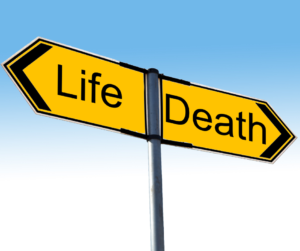
It is well researched that the set and the setting of the Psychedelic Assisted Therapy session forms a large part of the therapeutic effect of the drug. The therapist must provide a safe and professional space in which the person journeys with the substance, which will take between 6 – 8 hours. With highly skilled and relevant therapeutic support before, during (where the support person is known as “the sitter”), and after each session. The person taking the drug(s) needs to have a good understanding of what they are facing, a level of willingness to trust the process and an intention for themselves and what they want to experience/achieve for themselves. The person needs to be actively engaged in the session, rather than just leaving it all to the drug, as these drugs are powerful but alone are not the answer.
Because a psychedelic session will last from between 6 – 8 hours it can leave the client in a highly vulnerable space, especially if deep trauma has been accessed. An experienced sitter will not let the person leave until they are fully integrated.

What will a Psychedelic Assisted Therapy session actually look like? Psychedelic Assisted Therapy Session
This short video explains a little more about psychedelic assisted therapy.
Psychedelic Assisted Therapy uses four main drugs, methylenedioxymethamphetamine or MDMA, Psilocybin or magic mushrooms, lysergic acid diethylamide or LSD / acid and cannabis. ( ref Psychedelic Psychotherapy by R. Coleman)
As mentioned, some drugs like Psilocybin (magic Mushrooms) and Cannabis have been used by indigenous cultures for thousands of years. MDMA and LSD are recent pharmaceutical additions, having been discovered in the early 1900’s.
MDMA and LSD had undergone many trials during the 1950’s, identifying their unique and safe properties in treating mental health issues, namely PTSD and depression. MDMA also has some unique attributes that make it ideal in couples therapy, for which it was originally intended.
The combined neurobiological effects of MDMA can increase compassion for self and others, and diminish psychological defences and fear of emotional injury, while enhancing communication and empathy. The subjective effects of MDMA may therefore create a desirable psychological state that enhances the therapeutic process.
During the 1950’s & 1960’s, hundreds of therapeutic sessions were conducted using LSD and other substances, such as psilocybin and MDMA. They found that psychedelics allowed and supported responses to this treatment that mainstream medicines and therapies couldn’t.
Psilocybin fosters greater connections between different regions of the brain in depressed people, freeing them up from long-held patterns of rumination and excessive self-focus
The War on Drugs…
Because of the war on drugs, all these drugs and their use are currently illegal in most western countries.
During the early 1900’s, as the American alcohol prohibition was coming to a close, a group of bureaucrats, facing unemployment, decided to get creative and look for other substances to regulate. American political influence supported the gradual global ban on all these substances, with no exceptions.
Over the following years, this group of bureaucrats increased their influence and included more drugs, regardless of their properties. Richard Nixon, USA President in the early 1970’s used his powerful position to ramp up the war on drugs. This influence was targeted at different groups and demographics for political reasons only.

The war on drugs began as a political issue with very little evidence of legitimate danger. If this was the case, humanity has lost over 50 years of research, acceptance and healing amongst our most vulnerable people. ( ref Chasing The Scream by Johann Hari )
How safe are psychedelics?
Though not totally without risk, from the safety perspective, MDMA and psilocybin are ranked at the lower end of the graph (below), compared to alcohol and tobacco.
This graph was Published in Journal of Psychopharmacology 2019, and clearly indicates that Alcohol is the most dangerous drug consumed in Australia, even more so than crystal meth. Psilocybin (magic mushrooms) and LSD are included as well, near the opposite end compared to alcohol and tobacco.

The Australian drug harms ranking study
A world first in legalisation
The Therapeutic Goods Administration (TGA) in Australia have announced that MDMA and psilocybin will become legal for Psychedelic assisted therapy treatment of PTSD and depression from July 1st, 2023. ( Link to TGA website_ for further details)
These drugs can only be prescribed by a psychiatrist. The philanthropic organisation Mind Medicine have been lobbying for this change in Australian mental health treatments with Psychedelic Assisted Therapy for several years, and have finally achieved highly significant progress with this announcement. Although some state in the U.S. have legalised the use of MDMA for treatment of PTSD (largely in support of the huge number of war veterans) Australia is the only country in the world that has so far taken this step. Largely because of the overwhelming numbers of submissions in support of the change, and the current catastrophic situation in relation to mental health.
Psychedelic assisted therapy began in the early 1960’s, with unofficial trials with methylenedioxymethamphetamine or MDMA, more commonly known by its street name “ecstasy”. (Ecstasy purchased off the street quite often contains little, if any MDMA, and is most often a cocktail of various other substances- ephedrine, amphetamine, methamphetamine, Ketamine and others). What is sold at festivals and parties is not what is used in research trials and MD psychotherapy.
MDMA was initially discovered in 1912 and early trials didn’t include its potential psychedelic role. Somewhere around the early 1970’s, MDMA began trials as a potential anti depressant among innovative psychologists and psychiatrists.
These initial trials consisted of the therapists trialing the psychedelic drug themselves, as initially the opinion was that no therapist had the right to give consciousness altering substances as Psychedelic Assisted Therapy to any client unless they have had the experience for themselves.
This rule applies to to the drugs called hallucinogens, psychedelics, entheogens or entactogen’s. (MDMA is an entactogen), entheogen means awakening the god within. Entactogen means touching the self within. MDMA gained popularity with psychotherapists, because it can be given safely to people who are emotionally fragile and could be too challenging for them to be prescribed psilocybin (Magic mushrooms), mescaline, LSD and other similar drugs. With MDMA, there is no loss of control sometimes associated with other psychedelics, which can be disturbing and even re traumatising.(Ann Shulgin, “The New Psychotherapy”, Psychedelics and Spirituality, Park Street Press)

Using Psychedelics
From my personal experience with Psychedelic Assisted Therapy in dealing with deeply embedded complex PTSD and depression, I have found these treatments extremely effective, safe and with minimal, if any side effects. My experience with Psychedelic Assisted Therapy is of achieving total and sustainable remission from complex PTSD and depression. I still have ongoing anxiety from my residual trauma, but that is also gradually declining. I feel it is important also to point out that these drugs, while being effective, are only about 30% of the total psychedelic assisted therapy package, and is the crucial difference between recreational and therapeutic. Therapeutic requires an intention to walk through the door that psychedelics may open. With recreational use, the intent is to have a good time.
These drugs, especially MDMA will open closed or resistant doorways into deeply held trauma. The client must still choose to walk through that door. MDMA is effective, because it opens those doors by reducing the fear and anxiety levels as an embodied experience and opening the person to compassion.

Psilocybin, cannabis and LSD are true hallucinogens and do not have the level of predictability as MDMA, which is not a true hallucinogen, though it can have hallucinogenic qualities.
Taking psychedelics will offer the opportunity to move past old and subconscious blockages or barriers. The overall process of psychedelic therapy includes setting of your intention, a safe space to take the medicine, having an experienced sitter with you and having experienced and available back up integration and debriefing space afterwards.
Ask the Right Questions
MDMA and psilocybin are different in how the impact and assist the person in accessing depression or trauma. It is important to look for a therapist who can support you in understanding this difference between different drugs, and which one and the corresponding amount is right for you. It is also important that the people who you choose to work with know what they are talking about, not just from doing a course, but from experiencing first hand use of these medicines.
Both psychiatry and psychotherapy are about the science of the mind. They have been crucial in getting us understanding ourselves and our experiences this far. Yet they are limited in their understanding of the emotional vulnerability of a client under the influence of psychedelics during a session. For this reason, ask about any sitters experience and look for someone who has had numerous sessions themselves.
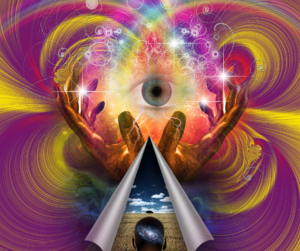
Psychedelics support the user to access their deep psyche, so it is crucial that your support person or sitter knows exactly what they are doing and definitely from personal experience. They will be able to advise you on which psychedelic to take from a personal understanding while being able to explain the potential impact and what you may experience while holding space and supporting you through this.
It doesn’t take much for an inexperienced sitter or therapist to unknowingly re traumatise their client.
Having the right support, set and setting can be the difference between a positive experience and “a bad trip”. A bad trip is largely from inappropriate use of these medicines, a lack of understanding what is actually going on inside the trip and support to come safely through to the other side.
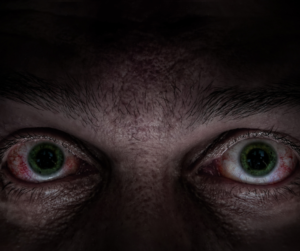
Psychedelic Medicine is so much more than just taking a tablet…
It is also:
1. Understanding the skills you will need during your session to make the most of it.
2. Setting your intention
3. Having the right setting in which to take the medicine
4. Taking the medicine
5. The right kind of support, support and support during and after your session
6. Debriefing and followup integration
People often say “I have tried those drugs and nothing changed”. This is probably because they are probably using them recreationally. There is very little comparison between therapeutic and recreational use. In therapeutic use, the medicine is only 30% of the whole process, as it is the setting of intention, the strongly held and experienced space to take the medicine with quality and easily accessible integration and back up afterwards.
These medicines are truly remarkable and demand the respect they deserve.
